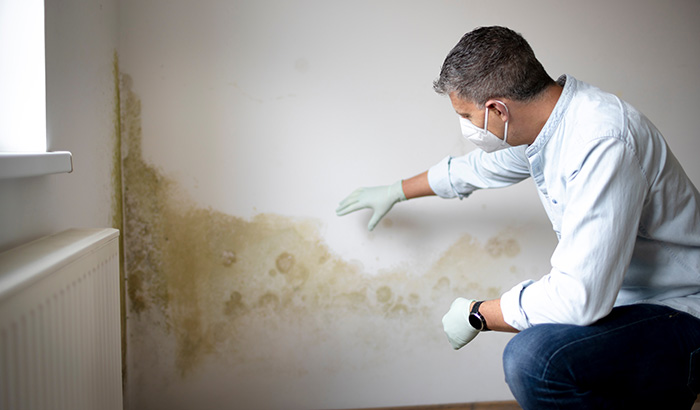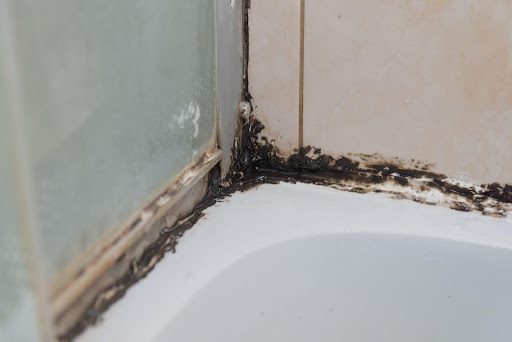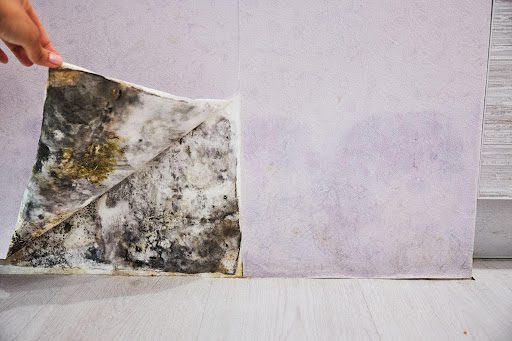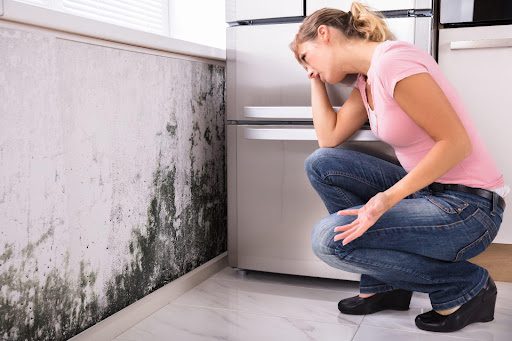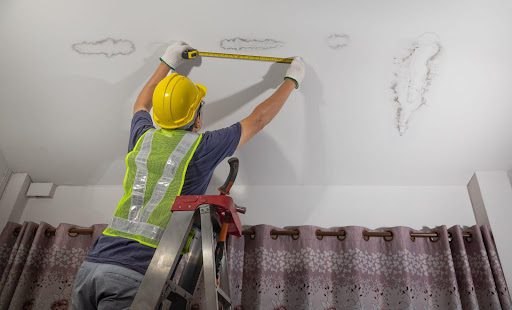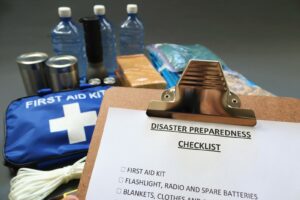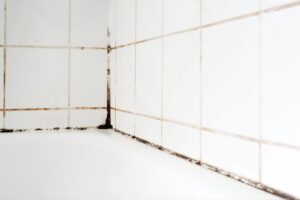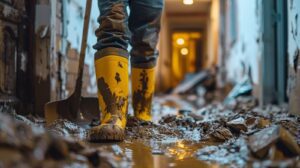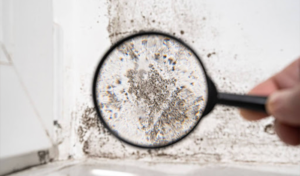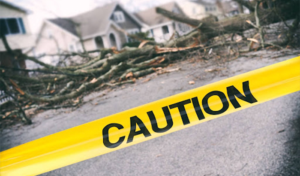Dealing with mold is a challenge many homeowners face. It sneaks into various corners of your home, especially in damp areas or those lacking proper ventilation.
When you discover mold growth in your living space, consider taking the DIY (Do-It-Yourself) route as a cost-effective solution. Many homeowners opt for this approach, aiming to save money and resolve the issue promptly. However, it’s vital to delve into the intricacies and potential pitfalls of DIY mold removal.
While tackling mold removal on your own is doable in some scenarios, it can become hazardous if not executed with the necessary precautions and knowledge. Mold doesn’t merely mar the appearance of your home; it can also bring about significant health concerns if it is not properly addressed.
In this blog, we will dive into the feasibility of DIY mold removal, shedding light on its benefits and drawbacks, and provide guidance on when it’s wise to seek professional assistance.
Understanding Mold
Mold is a type of fungus that plays a vital role in breaking down organic matter in nature. While it serves a purpose outdoors, indoor mold is problematic.
Common indoor mold types include Cladosporium, Penicillium, Aspergillus, and black mold (Stachybotrys chartarum). Recognizing these mold types is essential because each might require a different approach for removal and remediation.
Mold thrives in specific conditions — moist, warm, and dark places. You’ll often find mold in areas like bathrooms, kitchens, basements, and attics where humidity levels are higher. Mold can grow on various surfaces, including walls, ceilings, wood, drywall, and HVAC systems. Knowing where mold appears is the first step in detecting and preventing it.
A mold infestation is unsightly, poses health risks, and might damage your property. Mold exposure might lead to health problems, especially for those with allergies, asthma, or weakened immune systems. Symptoms might include nasal congestion, coughing, skin irritation, watery eyes, and breathing difficulties.
Mold will also harm your home by corroding building materials and affecting indoor air quality, potentially causing structural damage and reducing your living environment’s quality. Recognizing these consequences emphasizes the importance of addressing mold promptly and effectively.
Pros and Cons of DIY Mold Removal
Before deciding whether to tackle mold removal on your own, it’s crucial to weigh the advantages and disadvantages of this approach.
Taking on DIY mold removal offers some distinct advantages. For one, it can be cost-effective, saving you money on professional labor fees, especially if the mold problem is relatively small and manageable.
Another benefit is the ability to take immediate action, preventing further mold growth and potential damage to your property.
Additionally, by handling the removal process yourself, you have complete control over the methods and products used, ensuring they align with your preferences and safety standards.
However, there are notable disadvantages to consider. DIY mold removal can expose you to potential health risks, particularly if you lack proper protection and knowledge. Mold spores are harmful when inhaled or when they come into direct contact with your skin, which might lead to health issues, especially if you have allergies or pre-existing respiratory conditions.
DIY methods might not fully eradicate the mold infestation, resulting in incomplete removal. This allows the mold to persist and continue growing. Without professional assessment and intervention, there is a risk of mold recurrence, as the root cause of the problem might go unaddressed.
Balancing these pros and cons is essential when deciding whether to pursue DIY mold removal or seek professional assistance, ensuring that you can effectively address mold infestations while prioritizing your health and property’s well-being.
DIY Mold Removal Process
If you’re considering tackling mold removal on your own, it’s crucial to grasp the process and take the necessary precautions for a safe and effective outcome.
Start with a thorough mold inspection. Examine the affected area carefully, checking for visible mold growth, signs of water damage, or musty odors. Identifying the extent of the problem and the type of mold present is essential for choosing the right removal methods.
Next, gather the tools and materials you’ll need. This includes cleaning agents like hydrogen peroxide or vinegar, brushes, scrubbers, plastic sheets to contain the area, garbage bags for disposal, and a vacuum cleaner equipped with a HEPA filter to capture mold spores.
Prioritize your safety by wearing proper personal protective equipment (PPE). This includes N95 respirators or masks specifically designed for mold removal, latex or nitrile gloves, safety goggles, and disposable coveralls or clothing that you can launder separately.
When it comes to mold removal techniques, choose the method that suits the affected surface and material. For hard surfaces, scrubbing with a mold cleaner is often effective. However, for porous materials like drywall, it might be necessary to remove and replace the affected areas.
After successfully removing the mold, proceed with a thorough cleanup. Clean all surfaces with a mold-killing solution and allow them to dry completely. Properly dispose of contaminated materials, such as drywall or insulation, by sealing them in plastic bags. Remember to clean and disinfect your tools and equipment as well.
To prevent mold from returning, address the underlying moisture issue. Fix any leaks, enhance ventilation, and monitor humidity levels to maintain them below 50%. Regularly inspect the area for any signs of mold growth and take immediate action if it reappears.
Health Risks and Safety Measures
When you decide to remove mold yourself, it’s essential to be aware of potential health risks and the safety measures you should follow to protect yourself and your family.
Health Risks Associated with DIY Mold Removal:
Respiratory Issues: When disturbed during the removal process, mold spores can become airborne. Inhaling the spores could lead to respiratory problems. This is particularly concerning for individuals with allergies, asthma, or weakened immune systems, who may experience symptoms such as coughing, sneezing, nasal congestion, and throat irritation.
Skin and Eye Irritation: Direct contact with mold or contaminated materials might cause skin rashes, itching, and eye irritation. It’s crucial to adequately protect your skin and eyes during the removal process.
Allergic Reactions: Mold exposure can trigger allergic reactions, resulting in symptoms such as hives, redness, or other skin issues. The severity of these symptoms varies from mild to severe.
Infections: While it’s rare, mishandling mold without proper precautions potentially leads to fungal infections. Individuals with compromised immune systems are at a higher risk.
Safety Precautions and Protective Measures:
To minimize health risks during DIY mold removal, it’s crucial to adhere to specific safety precautions.
First and foremost, we recommend following the PPE guidelines we mentioned earlier. This gear protects against inhaling or coming into direct contact with mold spores.
Establish containment measures to isolate the affected area. This involves using plastic sheeting to prevent mold spores from spreading to other parts of your home.
Adequate ventilation is another key consideration. To achieve this, open windows and doors in the work area and consider employing fans and dehumidifiers to facilitate proper air circulation and humidity control.
During the cleaning process, opt for wet cleaning methods using a damp cloth or mop. This approach helps prevent mold spores from becoming airborne, thus reducing the risk of inhalation. Avoid dry brushing or sweeping, as it disperses spores throughout the environment.
When disposing of materials contaminated by mold, seal them in plastic bags for safe disposal and refrain from carrying contaminated items through your home to prevent further contamination. These precautions collectively contribute to safer DIY mold removal practices.
When to Seek Professional Help:
When dealing with mold, there are specific scenarios where seeking professional assistance is highly recommended.
If the affected area is extensive, typically exceeding 10 square feet, it’s best to consult professionals with the expertise and equipment to effectively manage significant infestations.
Hidden mold is another concern, as it often lurks in concealed spaces, such as wall cavities or within HVAC systems. Professionals have the tools and knowledge to identify and address hidden mold problems comprehensively.
Should you or your family members experience severe allergic reactions, respiratory problems, or skin issues during the DIY removal process, it’s advisable to seek professional help immediately to address potential health concerns.
Lastly, if mold keeps reappearing despite your best removal efforts, it might indicate an underlying moisture issue that requires professional assessment and remediation.
Recognizing these situations and understanding when it’s appropriate to seek professional assistance empowers you with the knowledge and confidence needed to approach DIY mold removal with a sense of security, all the while prioritizing the health and safety of your loved ones.
Mold Removal From Total Flood & Fire Restoration
In situations where extensive mold growth, hidden infestations, persistent recurrence, or health concerns arise during the removal process, you’ll want to partner with professionals you trust.
Experts like Total Flood and Fire Restoration come equipped with years of experience, advanced tools, and a deep understanding of mold remediation. We offer a comprehensive and safe solution to tackle your mold problems effectively.
Total Flood and Fire Restoration is the trusted choice to ensure a mold-free and healthy living environment. Don’t hesitate to call us or contact us online to take the next step toward safeguarding your home and your family’s well-being.

